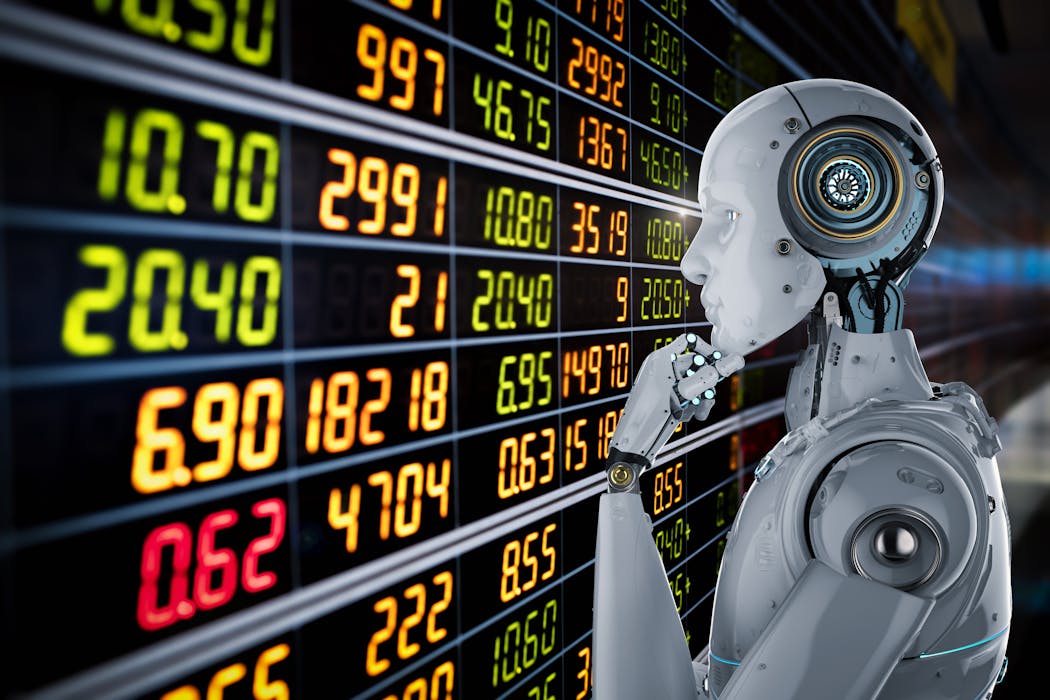
The global investment frenzy around AI has seen companies valued at trillions of dollars and eye-watering projections of how it will boost economic productivity.
But in recent weeks the mood has begun to shift. Investors and CEOs are now openly questioning whether the enormous costs of building and running AI systems can really be justified by future revenues.
Google’s CEO, Sundar Pichai, has spoken of “irrationality” in AI’s growth, while others have said some projects are proving to be more complex and expensive than expected.
Meanwhile, global stock markets have declined, with tech shares taking a particular hit, and the value of cryptocurrencies has dipped as investors appear increasingly nervous.
So how should we view the health of the AI sector?
Well, bubbles in technology are not new. There have been great rises and great falls in the dot-com world, and surges in popularity for certain tech platforms (during COVID for example) which have then flattened out.
Each of these technological shifts was real, but they became bubbles when excitement about their potential ran far ahead of companies’ ability to turn popularity into lasting profits.
The surge in AI enthusiasm has a similar feel to it. Today’s systems are genuinely impressive, and it’s easy to imagine them generating significant economic value. The bigger challenge comes with how much of that value companies can actually keep hold of.
Investors are assuming rapid and widespread AI adoption along with high-margin revenue. Yet the business models needed to deliver that outcome are still uncertain and often very expensive to operate.
This creates a familiar gap between what the technology could do in theory, and what firms can profitably deliver in practice. Previous booms show how quickly things wobble when those ideas don’t work out as planned.
AI may well reshape entire sectors, but if the dazzling potential doesn’t translate quickly into steady, profitable demand, the excitement can slip away surprisingly fast.
Fit to burst?
Investment bubbles rarely deflate on their own. They are usually popped by outside forces, which often involve the US Federal Reserve (the US’s central bank) making moves to slow the economy by raising interest rates or limiting the supply of money, or a wider economic downturn suddenly draining confidence.
For much of the 20th century, these were the classic triggers that ended long stretches of rising markets.
But financial markets today are larger, more complex, and less tightly tied to any single lever such as interest rates. The current AI boom has unfolded despite the US keeping rates at their highest level in decades, suggesting that external pressures alone may not be enough to halt it.
Instead, this cycle is more likely to end from within. A disappointment at one of the big AI players – such as weaker than expected earnings at Nvidia or Intel – could puncture the sense that growth is guaranteed.
Alternatively, a mismatch between chip supply and demand could lead to falling prices. Or investors’ expectations could quickly shift if progress in training ever larger models begins to slow, or if new AI models offer only modest improvements.
Overall then, perhaps the most plausible end to this bubble is not a traditional external shock, but a realisation that the underlying economics are no longer keeping up with the hype, prompting a sharp revaluation across related stocks.
Artificial maturity
If the bubble did burst, the most visible shift would be a sharp correction in the valuations of chipmakers and the large cloud companies driving the current boom.
These firms have been priced as if AI demand will rise almost without limit. So any sign that the market is smaller or slower than expected would hit financial markets hard.
This kind of correction wouldn’t mean AI disappears, but it would almost certainly push the industry into a more cautious, less speculative phase.

The deepest consequence would be on investment. Goldman Sachs estimates that global spending on AI-related infrastructure could reach US$4 trillion by 2030. In 2025 alone, Microsoft, Amazon, Meta and Google’s owner Alphabet have poured almost US$350 billion into data centres, hardware and model development. If confidence faltered, much of this planned expansion could be scaled back or delayed.
That would ripple through the wider economy, slowing construction, dampening demand for specialised equipment, and dragging on growth at a time when inflation remains high.
But a bursting AI bubble would not erase the technology’s long-term importance. Instead, it would force a shift away from the “build it now, profits will follow” mindset which is driving much of the current exuberance.
Companies would focus more on practical uses that genuinely save money or raise productivity, rather than speculative bets on transformative breakthroughs. The sector would mature. But it would probably do so only after a painful period of adjustment for investors, suppliers and governments who have tied their growth expectations to an uninterrupted AI boom.
This article is republished from The Conversation, a nonprofit, independent news organization bringing you facts and trustworthy analysis to help you make sense of our complex world. It was written by: Alex Dryden, SOAS, University of London
Read more:
- If the AI bubble does burst, taxpayers could end up with the bill
- DeepSeek, Nvidia and the AI race that’s shaping the future
- What could burst the AI bubble?
Alex Dryden does not work for, consult, own shares in or receive funding from any company or organisation that would benefit from this article, and has disclosed no relevant affiliations beyond their academic appointment.


 The Conversation
The Conversation
 Benzinga
Benzinga Fast Company
Fast Company CNBC
CNBC Butler Eagle
Butler Eagle Omak Okanogan County Chronicle
Omak Okanogan County Chronicle WTOP Business
WTOP Business Honolulu Star-Advertiser Traffic
Honolulu Star-Advertiser Traffic CNN Business
CNN Business The Babylon Bee
The Babylon Bee New York Daily News Snyde
New York Daily News Snyde